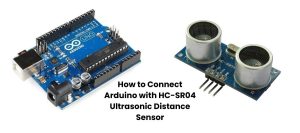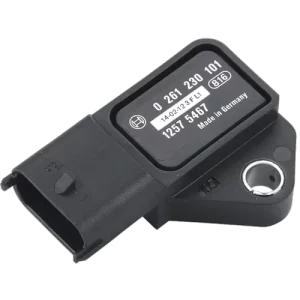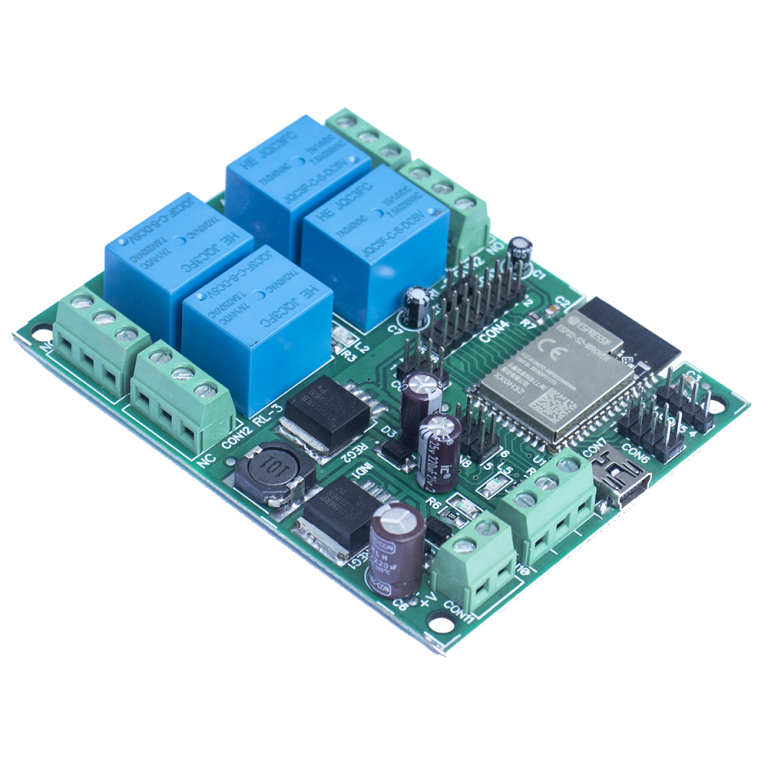Home security systems are an essential investment for homeowners in the USA, providing peace of mind and protection against burglaries and theft. With so many options available, it can be challenging to choose the right system for your needs. Today we will provide a comprehensive guide on how to choose the right home security system for your needs.
We will cover topics such as assessing your security needs, understanding the different types of security systems, considering the features you need, setting a realistic budget, researching reputable security companies, customization and scalability, installation and maintenance, integration with other smart home devices, and understanding the contract and warranty.
By following these guidelines, you can select a security system that meets your specific needs and provides the level of protection you require for your home specially in the US.
Table of contents:
- Assess Your Security Needs
- Understanding the Different Types of Security Systems
- Consider the Features You Need
- Set a Realistic Budget
- Research Reputable Security Companies
- Customization and Scalability
- Installation and Maintenance
- Integration with Other Smart Home Devices
- Understand the Contract and Warranty
- Conclusion
1. Assessing Your Security Needs
Before investing in a home security system, take the time to evaluate your home’s unique security requirements. This involves a thorough examination of both the physical and digital aspects of your residence to ensure a holistic understanding of your security needs. Here are crucial aspects to consider during this assessment:
Physical Security
Inspect your home’s doors, windows, locks, and lighting to guarantee they are secure and well-maintained. Enhance security by considering secondary locks for windows and reinforcing them with security film.
Digital Security
Evaluate your home’s digital security measures, including passwords, online privacy, and home automation systems. Ensure your Wi-Fi router is securely placed to minimize interference and unauthorized access.
Neighborhood and Community Risks
Understand the everyday occurrences in your neighborhood and potential risks associated with specific locations. Familiarize yourself with local crime patterns and consider their impact on your home security needs.
Valuables and Personal Belongings
Identify and document all valuable items, including those without serial numbers like collectibles or jewelry. Regularly update this inventory and store it off-site in the cloud for easy access.
Emergency Response
Evaluate your home’s emergency response system, encompassing fire and carbon monoxide detectors, as well as a reliable emergency contact system.
Surveillance and Cameras
Assess the need for video surveillance and security cameras in strategic locations, such as entrances, exits, and key points of interest.
Access Control
Determine the level of access control you require, considering keyless entry systems, smart locks, or video intercoms.
Monitoring and Response
Consider whether you want a monitored security system with professional alerts or a DIY system relying on your smartphone for notifications and response.
Budget and Long-term Maintenance
Establish a budget for your home security system, covering the initial purchase, installation, and ongoing maintenance.
By meticulously evaluating these aspects, you can make informed decisions about the right security system for your specific needs, ensuring the safety of your property and loved ones.
2. Understand the Different Types of Security Systems
When it comes to safeguarding your home, knowledge of security systems is paramount. Let’s delve into the main types available in the context of the USA:
Monitored Security Systems
Connected to a 24/7 monitoring service, these systems ensure constant surveillance. When triggered, the monitoring service can promptly alert the authorities.
Unmonitored Security Systems
Lacking a monitoring service connection, these systems rely on a loud siren to notify homeowners or neighbors when the alarm is activated.
Wired Security Systems
Hardwired into homes, wired systems boast reliability but demand a more intricate installation process, involving running wires through walls.
Wireless Security Systems
Utilizing wireless technology, these systems offer flexibility in placement and ease of installation compared to wired counterparts.
Access Control Systems
Managing home access, these systems include keyless entry, smart locks, and video intercoms for enhanced security.
Security Cameras and Video Surveillance
Acting as deterrents to intruders, video surveillance systems also provide crucial evidence in the event of a break-in.
Alarm Systems
Incorporating features like motion sensors and panic buttons, alarm systems play a vital role in comprehensive security setups.
Sensors
Encompassing door/window sensors, motion detectors, and environmental sensors, these devices detect various threats like smoke, fire, or carbon monoxide.
Emergency and Fire Safety Systems
Protecting homes from emergencies, these systems include smoke detectors, fire alarms, and carbon monoxide detectors.
By familiarizing yourself with these diverse security systems, you empower yourself to make informed decisions tailored to your specific security needs.
Remember, the key to effective security is not just investing in a system but understanding which one aligns best with your unique requirements. Stay informed, stay secure!
3. Key Considerations for an Effective Home Security System
It’s imperative to assess functionalities that elevate your home’s safety. Here are essential features to weigh:
Remote Access and Control
Seek a system enabling remote access via a smartphone app or web portal. This allows you to effortlessly arm or disarm the system, view live video streams, and receive alerts.
User-Friendly Design
Opt for a system with an intuitive interface and a user-friendly manual. Simplicity in operation and maintenance is key.
Wireless Technology
Select a wireless security system for flexible installation, less vulnerability to tampering, and ease of expansion or modification.
Entryway and Motion Sensors
These sensors detect unauthorized entry and movement, triggering alarms and alerting you to potential security breaches.
Video Surveillance
Consider a system with security cameras offering high-quality footage, night vision, and motion-activated recording. This not only deters intruders but also provides crucial evidence in case of a break-in.
Smart Home Integration
For those with other smart home devices, opt for a security system that seamlessly integrates, creating a connected smart home ecosystem.
Environmental Sensors
Detect changes in temperature, humidity, and water with these sensors, alerting you to potential environmental hazards such as fire or flooding.
Professional Monitoring
Systems with professional monitoring provide an extra layer of security. Trained professionals respond to alerts and can dispatch emergency services if needed.
Two-Way Voice Communication
Certain systems offer two-way voice communication, allowing direct communication with a monitoring center during emergencies.
By carefully considering these features, you can select a home security system tailored to your specific needs, ensuring the level of protection required for your USA home.
4. Set a Realistic Budget
Securing your home requires a well-thought-out budget to maximize the value of your investment. Here, we dissect key considerations for determining a realistic budget for your home security system :
Cost of Equipment
The cornerstone of your security lies in the equipment you choose. Home security systems vary widely in price, ranging from $100 to several thousand dollars. The size of your home and the selected features will influence this cost. Assess the number of sensors, cameras, and other components needed to safeguard your entire property.
Installation Costs
Installation is a pivotal point in your budget. Some systems allow for DIY installation, while others mandate professional assistance. Costs fluctuate based on the system’s complexity and your choice between self-installation and professional services.
Monitoring Costs
Opting for a monitored security system introduces ongoing monitoring service fees, typically ranging from $10 to $30 monthly. This cost depends on the service provider and your system’s features.
Maintenance Costs
Regular maintenance is imperative to keep your security system operating optimally. Account for expenses related to battery replacements, software updates, and additional service calls.
Budgeting for Emergency Expenses
Prepare for unexpected events like break-ins by factoring in potential costs for property replacement or other expenses stemming from security incidents.
Long-term Costs
Consider the extended financial commitments of your security system, encompassing subscription fees, equipment upgrades, and extended warranties.
Budgeting for Additional Features
Enhance your security system with features like video surveillance or smart home integration. Include associated costs when planning your budget.
Budgeting for Expansion
As your needs evolve, anticipate the costs of expanding your security system. Whether adding new components or upgrading the entire system, be prepared for the associated expenses.
Budgeting for Training and Education
If training or education is necessary for optimal system use, incorporate these costs into your budget considerations.
By meticulously evaluating these factors, you can establish a pragmatic budget tailored to your unique needs. This ensures your home security system not only meets your requirements but also provides the level of protection essential for your home in the USA. Unlock peace of mind with a strategic and well-planned approach to home security budgeting.
5. Research Reputable Home Security System Companies
Navigating the Security Landscape: Top Manufacturers in the USA
When delving into the realm of security system manufacturers in the USA, it’s imperative to weigh factors such as experience, product quality, and customer reviews. Let’s explore some of the industry leaders:
1. ADT: A Trusted Security Solution
ADT stands tall as a well-established security company, providing a spectrum of solutions—from home and business security to cutting-edge smart home services.
2. SimpliSafe: DIY Security Made Simple
SimpliSafe emerges as a favored choice for DIY home security. With easy installations and user-friendly systems, it offers an affordable security solution.
3. Vivint: Elevating Home Security
Known for top-notch home security systems and stellar customer service, Vivint introduces features like video surveillance, home automation, and professional monitoring.
4. Alder Security: Simplicity Meets Affordability
Alder Security focuses on delivering straightforward and budget-friendly home security solutions, presenting DIY install systems with diverse features.
5. Cove: Customizable Security Solutions
Cove takes the DIY route for home security, coupled with optional professional monitoring. Their emphasis lies in providing an easy-to-use and customizable security solution.
6. Customization and Scalability
Tailoring Security Systems to Your Unique Needs
Customization and scalability stand as pivotal considerations when selecting a security system. These factors ensure that your system can evolve in tandem with your changing needs, adapting to your distinctive requirements. Let’s explore key facets of customization and scalability:
Flexible Installation
Look for a security system that provides diverse installation options, be it DIY installation or professional installation. This accommodates your preferences and skill level.
Modular Design
Opt for a system featuring a modular design, allowing seamless addition or removal of components as needed. This guarantees the system’s relevance and effectiveness as your security requirements evolve.
Customizable Alert Settings
Some systems offer customizable alert settings, empowering you to tailor notifications to your preferences and avoid unnecessary alerts.
Integration with Other Systems
Choose a security system capable of integration with other systems, such as smart home devices or existing security infrastructure. This fosters a seamless and interconnected security ecosystem.
Scalable Cloud Solutions
Consider a security system leveraging scalable cloud solutions for flexible and cost-effective data management and storage.
Growth and Expansion
Select a system that supports growth and expansion, allowing the easy addition of new components or features as your needs change.
Adaptable to Changing Security Needs
In the fast-paced landscape of digitization and advancing technology, security needs can shift rapidly. Ensure your security system is adaptable, evolving with these changes to maintain its effectiveness.
Flexible Pricing and Plans
Look for a security system offering flexible pricing and plans, enabling you to choose services and features that align with your needs without exceeding your budget.
By considering customization and scalability, you can choose a security system that grows with you, ensuring effective protection for your home or business.
7. Installation and Maintenance of Home Security System
Professional Installation for Robust Security
Consider engaging a professional security company for your system’s installation. Their expertise guarantees the correct setup and ensures all components function seamlessly.
Regular Maintenance Keeps Security Optimal
To maintain optimal functionality, regular maintenance is paramount. This involves software updates, equipment cleaning, and routine inspections to promptly identify and address any issues.
Emergency Repair Services: A Vital Assurance
Choose a security company offering emergency repair services. In the face of system failure, having access to prompt and reliable repair services is crucial.
Training and Support for Empowered Users
Ensure your chosen security company provides comprehensive training and support for your system. This includes user training, technical support, and access to resources to maximize your system’s potential.
Compliance with Local Regulations: A Necessity
Verify that your security system complies with local regulations and requirements. This includes obtaining necessary permits and ensuring adherence to relevant standards and codes.
Seamless Integration with Existing Systems
If you have other security or automation systems, ensure seamless integration with the new security system. This interconnected approach creates a cohesive and efficient security ecosystem.
Scalability for Future Security Needs
Opt for a scalable security system that can grow with your evolving needs. This includes the flexibility to add new components or upgrade existing ones as your security requirements change.
By considering these factors, you guarantee correct installation, effective maintenance, and fulfillment of your specific security needs.
8. Integration with Other Smart Home Devices
Smart Home Integration: A Crucial Component
Integration with other smart home devices is a pivotal facet of a contemporary security system, paving the way for a more holistic and interconnected home automation ecosystem. Here, we delve into essential considerations for seamless smart home integration.
Compatibility with Smart Home Platforms
When selecting a security system, prioritize compatibility with leading smart home platforms such as Amazon Alexa, Google Assistant, and Apple HomeKit. This facilitates the integration of your security system with other smart home devices, allowing for centralized control through voice commands or a dedicated app.
Interoperability Standards
Opt for a security system adhering to interoperability standards like Matter (formerly Project CHIP). This ensures smooth collaboration among smart home devices from various manufacturers, irrespective of the underlying technology.
Automation and Control
Smart home integration empowers you to automate and control diverse aspects of your home, extending beyond security to include lighting, heating, and entertainment systems. This not only enhances convenience but also contributes to energy efficiency and overall home management.
Expansion and Customization
Choose a system supporting smart home integration for the flexibility to expand and customize your home automation setup as your needs evolve. This may involve adding new devices, creating personalized routines, and seamlessly integrating third-party services.
Security and Privacy
Prioritize security and privacy when integrating smart home devices. Opt for devices and platforms with robust security features, regular software updates, and potent data encryption to safeguard your personal information and home network.
By carefully considering these factors, you can select a security system that seamlessly integrates with other smart home devices, providing a more coherent and intelligent home security and automation experience.
9. Understand the Contract and Warranty
Navigating Security System Contracts in the USA
Understanding the intricacies of a security system contract and warranty in the USA demands careful consideration of various crucial factors. Here’s a breakdown of key points to bear in mind:
Warranty Coverage
Delve into the specifics of the warranty coverage offered by the security system manufacturer. This encompasses the duration of the warranty, covered components, and any limitations or exclusions that may apply.
Extended Warranties
Certain manufacturers or third-party entities may extend warranty coverage for an extra cost. Scrutinize the terms and conditions of these extended warranties to gauge their value and ascertain any additional coverage they may offer.
Contract Terms
Upon purchasing a security system, you enter into a contract with the security company. Thoroughly review the contract terms, encompassing the contract duration, recurring fees, and provisions for cancellation or early termination.
Service and Repair
The contract should outline the terms governing the service and repair of the security system. This includes specifics such as service call costs, the inclusion of periodic tests or inspections, and the provision of loaner equipment during repairs.
Software Upgrades
For security systems with integrated software, the contract must delineate the terms for software upgrades. This involves details like upgrade costs and whether they are encompassed within the contract.
Good Faith and Fair Dealing
In accordance with UCC 1-203, all contractual performances must be carried out in good faith. This implies that parties involved in the contract must act honestly and adhere to reasonable commercial standards of fair dealing.
By meticulously examining the warranty and contract terms governing your security system, you not only grasp your rights and obligations but also ensure that you receive the necessary coverage and service for your security system.
Conclusion :
In conclusion, choosing the right home security system for your needs is a critical decision that can significantly impact your family’s safety and peace of mind. By considering factors such as your security needs, the different types of security systems available, the features you require, your budget, and the reputation of the security companies, you can make an informed decision that provides the best protection for your home.
Additionally, understanding the contract and warranty terms will ensure that you get the coverage and service you need from your chosen security system. By following these guidelines, you can select a home security system that meets your specific needs and provides the level of protection you require for your home.
You may also like:
Top 9 Home Security System Features in 2023.





















+ There are no comments
Add yours